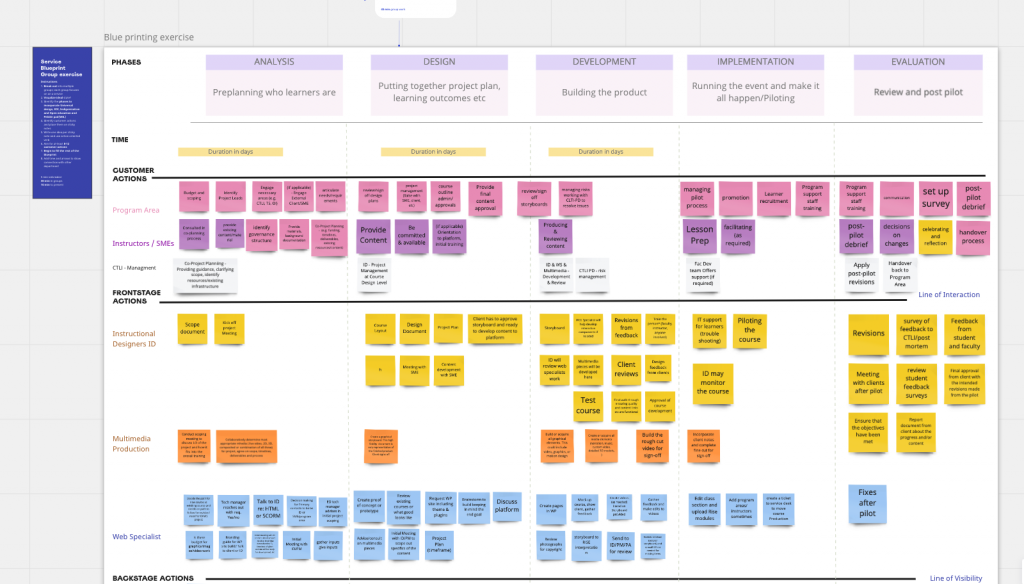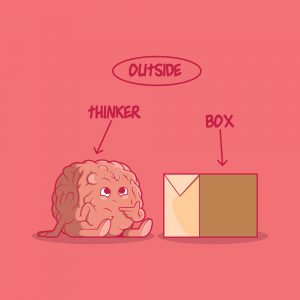Krista Lambert & Melanie Meyers
Krista Lambert is an Instructional Designer in the Centre for Teaching, Learning & Innovation.
Melanie Meyers is the Program Director in the Centre for Teaching, Learning & Innovation.

A look at what's in our future – Reflections from the ETUG Spring Workshop
Twice a year the Educational Technology User Group (ETUG) of BC connect and share ideas, inspiration, projects and challenges. ETUG is a community that “exists to empower and inspire all who design, develop, and support learning experiences.” CTLI staff who participate in these events regularly are grateful to be a part of this community that is supportive and contributes to our professional development.

Classroom – Illustration Background by DesignSells
The recent 2022 Spring session “Flipped, Hyflex + Hybrid” did not disappoint once again, and those of us who were able to attend some of the sessions came away with new ideas and approaches that we can apply to our context here at JIBC. The 2 day workshop was jammed-packed with topics ranging from how our roles have changed over the last two years, to new delivery modes and hylfex learning to what’s in our future.
Here are some of the things we are reflecting on in CTLI:
How have our roles evolved over the last two years of Covid?
 The workshop kicked off with a panel discussion on the future of ed tech with presenters from across the Province. The presenters reflected back on how teaching and learning centres played a key role in supporting faculty and staff in quickly adapting to new modalities. This included, for many, taking on more technical support responsibilities. What is clear, is that everyone rose to the occasion through collaboration and supporting one another, however there was a cost to this in the workload and burnout experienced by all of us. In CTLI we are going through our own look back and how we move forward from here. We have engaged in planning activities recently and will be doing more work to define our vision and goals for the future – we are excited to see where our discussions take us!
The workshop kicked off with a panel discussion on the future of ed tech with presenters from across the Province. The presenters reflected back on how teaching and learning centres played a key role in supporting faculty and staff in quickly adapting to new modalities. This included, for many, taking on more technical support responsibilities. What is clear, is that everyone rose to the occasion through collaboration and supporting one another, however there was a cost to this in the workload and burnout experienced by all of us. In CTLI we are going through our own look back and how we move forward from here. We have engaged in planning activities recently and will be doing more work to define our vision and goals for the future – we are excited to see where our discussions take us!
What does a multi-access classroom look like and what is needed to it?

Think Outside the Box! by fernandespedro
Multi-access classrooms was a hot-topic for this workshop. There were a number of sessions that shared examples and some really practical considerations. This is somewhat new territory for JIBC so we were keen to find out what others are doing. One could argue that the Rix Simulation building was the JIBC’s dedicated multi-access space but in terms of classrooms we have only just begun to explore what that could look like and there can be a range of options from quick and easy to a more complete set up.
Rich McCue, Manager of the Digital Scholarship Commons at UVIC shared how they redesigned their library skills workshops and ed tech courses to a HyFlex format. Rich shared a few tips on hardware to consider for set up including wireless mics and desktop speakers. Also from UVIC, presenters from the Faculty of Education and their Division of Learning and Teaching talked about the set up of two classrooms that were repurposed for multi-access teaching. They highlighted the significant investment required to get the classrooms set up and some important considerations like overhead speakers and carpet on the floors. Their Multi-Access Teaching and Learning site has more details about classroom set up and support.
We were curious about ways to set up multi-access spaces easily and the team from the Faculty of Land and Food Systems at UBC implemented a pop-up studio that did just that. They were able to assign a space that was not a classroom – converting into a studio with green screen where an instructor can record synchronous classes using a combination of hardware like an ATEM Mini Pro and Wacom Tablet, all on a portable table. There is of course a need for technical support for faculty both before and during the class but the set up is relatively simple. We really loved the weather report style view of the instructor standing in front of their slides or visuals as they would in the actual classroom. If felt as though you were right there (well almost!)
What are the challenges with HyFlex teaching and learning? What is it all about?
In a recent HUB post, Dave Smulders provided some information and definitions when in comes to HyFlex which is worth a read if you didn’t get a chance previously. At ETUG, Helena Prins and Tracy Roberts from BCcampus facilitated a session giving a broad overview of HyFlex learning design and asked participants to think about HyFlex at their institution and what, if any, challenges were you facing. We learned that HyFlex meant integrating synchronous video, in-class and/or asynchronous content delivery in a course. The breakout activities during this session reinforced the value in participating in the ETUG community. Many examples of HyFlex were shared and we feel equipped with more information to work with our JIBC faculty and staff on HyFlex designs as a result.
An example of HyFlex or Hybrid teaching was shared by the UBC Faculty of Forestry‘s Yangqiang Qi and Michelle Zeng. They took a variety of different approaches to support remote teaching and learning but one in particular stood out for their virtual experience fieldwork. 360 videos were used to immerse students in the field and to allow for Indigenous community visits. At CTLI we have already been exploring and using 360 images and video and seeing what is possible in the forestry context was inspiring.
One thing we know is that we will not be returning to the way things were before Covid. Educational technology communities in BC are embracing and problem solving supporting effective teaching and learning practices in new and exciting ways.




